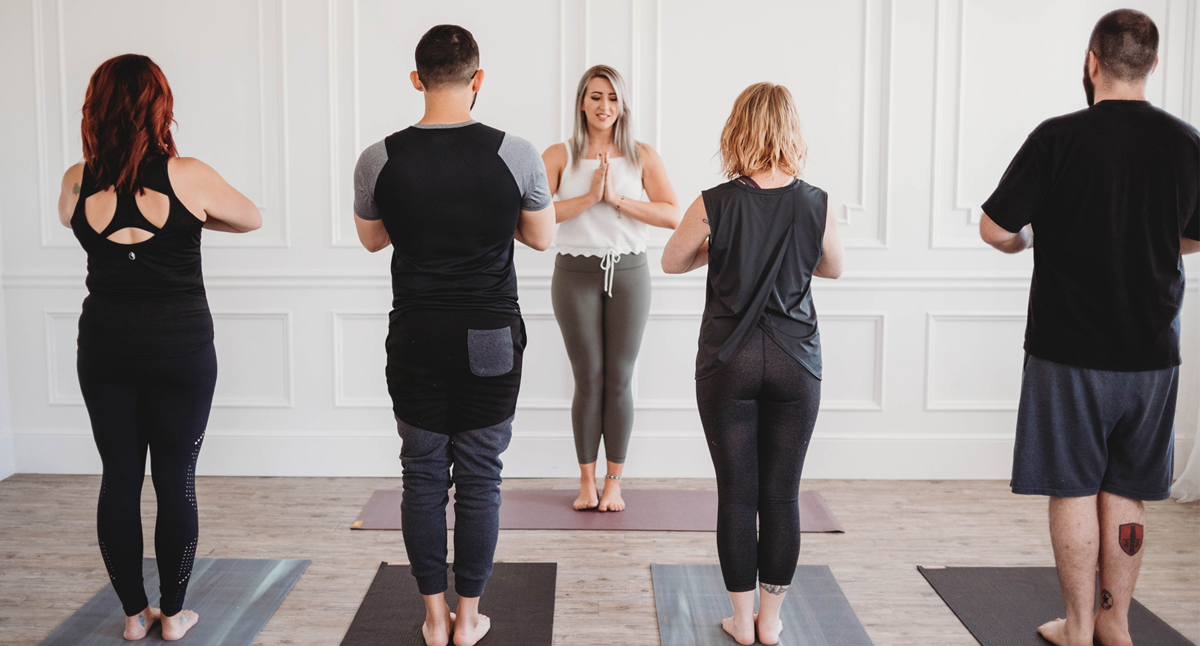
I recently wrote a post on the widespread problem of sacroiliac (SI) joint dysfunction among yoga practitioners. In the post, I outlined several of the causes I’ve observed over more than 40 years of teaching and practicing yoga asana. In today’s post, we’ll explore how to prevent the first of these causes of SI joint problems.
There could well be more reasons why SI joint dysfunction is common among yoga practitioners that I haven’t yet encountered. (I welcome your thoughts if you’ve experienced SI joint pain from a movement other than the ones I list below.) And there are certainly other things we do in our daily lives that may cause problems. For example, actions such as improper lifting, shoveling snow and traumatic injuries can destabilize the joint. But there are specific actions we practice regularly in yoga that can cause SI joint dysfunction.
Here are the ones I’ve identified so far:
- Tucking the tailbone
- Squaring the hips in asymmetrical standing poses such as Trikonasana (Triangle Pose) and the Warrior poses, and in twists
- Too much focus on hip opening
Healthy SI Joint Practice
Untucking the Tailbone: The hip system is made up of three joints—the hip joints, the SI joint and the pubic symphysis. The position of each of these joints affects the integrity of the others. (The pubic symphysis is immobile except during birth, so I’m going to focus on the other two here.)
For the sacrum to seat securely in the ilium, it should sit at approximately a 30-degree angle so that the top tilts forward. This means that the pelvic rim needs to tilt forward with the tailbone pointing back. When the sacrum is seated in the joint, the SI joint can perform its main function of transferring force from the legs to the upper body and vice versa. When we tuck the tailbone, we lose that connection. In addition, over time, tucking the tailbone can destabilize the joint as the ligaments that hold the joint together are overstretched.
The sacral/pelvic position has important implications for the SI joint and for the hip joints, as well as the spine and the knees. When we tuck the tailbone, the heads of the femurs push up against the anterior rims of the hip sockets. This can wear down the cartilage and labrum of the hip joints over time. In addition, when we tuck the tailbone and push the thighbones forward, the knees hyperextend. Finally, tucking the tailbone straightens out the lumbar curve.
How to Determine Your SI Joint Position
The most reliable way to know whether your pelvis, and therefore your SI joint, is in a neutral position is to develop an inner reference for what proper positioning feels like. An outside observer, such as a yoga teacher, can’t necessarily judge your position simply by looking at it. This is because the shape of individual sacrum bones is highly variable. Sacrum bones can be wide or narrow, triangular or relatively straight sided, and the profile of the bone may be curved or straight. So for example, someone with a curvy sacrum may look as if she is tilting the sacrum forward but may, in fact, be tucking the tailbone. Here’s an exploration to try:
- Stand in Tadasana (Mountain Pose) with your feet hips-width apart.
- Place your fingertips at the top of your thighs, at the hip crease.
- Tuck your tailbone and palpate the tissue at the hip crease. Note how this tissue feels. It will likely feel taut and hard.
- Begin to draw the heads of the thighbones back, guiding them gently with your fingertips. You will likely feel as if you’re sticking your butt out.
- Now palpate the tissue. If your pelvis is in a neutral position, you will feel a bit of end spring in the tissues at the hip crease. If you tilt too far forward, the tissues will feel slack. So when the tissues feel not too tight, or not too loose, you’re probably in the ballpark.
Wag Your Tail for Happy Hips
Another way of determining your sacral position is to check to see if you can “wag your tail,” moving your buttocks side to side.
- First, stand in Tadasana and tuck your tailbone. Try to wag your tail. Your pelvis will likely stay stationery and your upper body will move side to side.
- Then tilt your pelvic rim forward to the point where the tissues in the hip crease feel springy but not slack. Now try to wag your tail. If you can wag your pelvis from side to side, your pelvis is likely in neutral and your sacrum can sit securely in the joint.
Stay tuned for the next in my SI joint series, where I’ll discuss why not to square your hips in asymmetrical standing poses.
If you’re interested in more detailed info about the hips and SI joints, read my most recent book: Hip-Healthy Asana: A Yoga Practitioner’s Guide to Protecting the Hips and Avoiding SI Joint Pain. The book includes an effective method for teachers to test pelvic position with their students.
